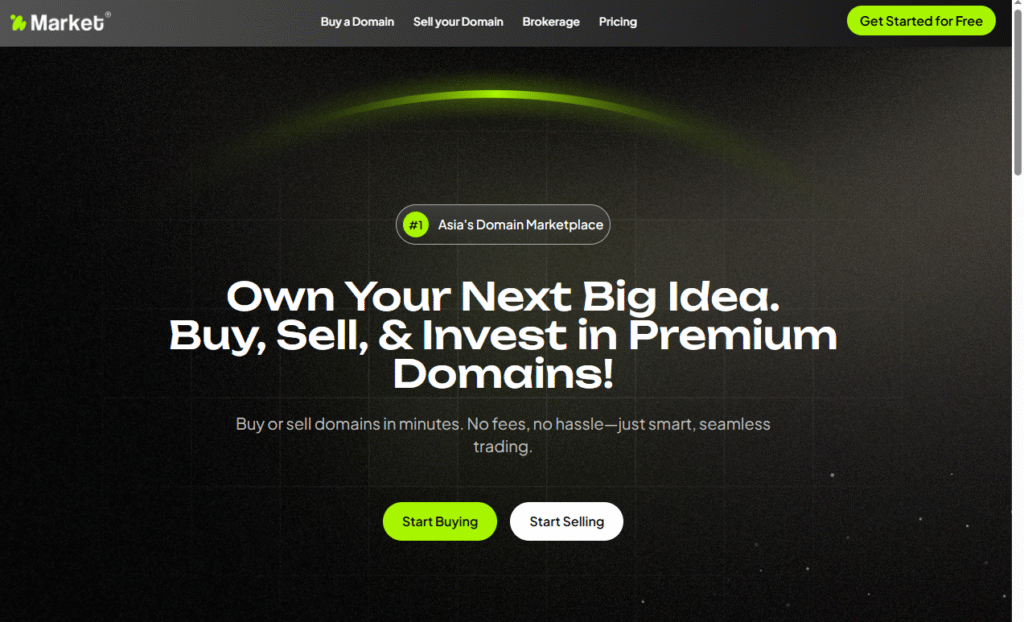Locating qualified buyers is essential for thriving in domain reselling. Pinpointing the right prospects, understanding their objectives, and reaching out strategically can greatly boost your chances of selling domains at lucrative prices.
Avoid scattering your outreach broadly, as this often results in wasted effort and the risk of being flagged as spam. Instead of taking shortcuts that lead to more work, focus on smarter strategies to attract serious buyers, craft detailed buyer personas, and use targeted communication methods to maximize your sales potential.

Effective Ways to Identify Potential Domain Buyers
1. Distinguishing End-Users from Investors
Recognizing the difference between end-users and investors helps tailor your approach:
Investors: These buyers, like yourself, aim to acquire domains at lower prices to resell for profit. They tend to be more price-conscious and focus on domains with clear resale opportunities.
End-Users: These buyers are individuals or businesses seeking a domain for immediate use—like launching a website or rebranding. They usually value domain relevance and are willing to invest more for a perfect fit.
2. Targeting Businesses in Relevant Sectors
Companies operating in industries related to your domain are excellent prospects. To find them:
- Industry Directories: Explore resources such as Yellow Pages, trade association listings, and online business databases to locate relevant companies.
- Competitive Research: Identify firms competing with businesses that already own similar domains.
- Online Marketplaces: Browse platforms like Alibaba, Amazon, and Etsy to spot businesses dealing in products or services linked to your domain.
3. Connecting with Emerging Startups and Brands
New startups and brands often need strong domain names to establish their digital footprint. You can find these buyers by:
- Startup Accelerators and Incubators: Track organizations like Y Combinator, Techstars, and AngelList to discover promising startups.
- Industry News and Press Releases: Stay updated on new company launches and funding announcements within your domain’s niche.
- Social Media Monitoring: Follow relevant hashtags and discussions on Twitter, LinkedIn, and other platforms to spot businesses seeking domain names.
By focusing your efforts on these qualified buyers, you’ll increase your chances of successful sales and create lasting value from your domain portfolio.

Creating a Buyer Persona
Developing a detailed buyer persona allows you to customize your outreach and marketing strategies to connect with the most suitable buyers. Here’s a step-by-step guide to crafting an effective buyer persona:
1. Outline Demographics
Start by identifying key demographic details about your ideal buyers, such as:
- Age range
- Gender
- Geographic location
- Job role and industry
- Size of their company
2. Explore Their Goals and Pain Points
This is the cornerstone of your persona. Understanding what your buyers aim to accomplish and the difficulties they encounter is essential:
- Goals: What are their main business aims? Are they seeking to enhance their online visibility, rebrand, or break into a new market?
- Challenges: What obstacles or pain points do they face in their sector? How can your domain help solve these issues?
3. Examine Their Buying Habits
Look into how your target buyers approach researching, evaluating, and purchasing domains or related assets:
- Research Channels: Do they gather information from industry blogs, discussion forums, or personal recommendations?
- Decision Factors: What matters most when they select a domain? Is it price, keyword relevance, memorability, or brand potential?
- Preferred Purchase Methods: Do they favor direct purchases, marketplace transactions, or working through brokers?
- By fully understanding your buyers through this persona, you can craft targeted, compelling messages that resonate and increase your chances of closing sales.
Outreach Techniques
Effectively connecting with prospective domain buyers involves strategic outreach methods. Email remains one of the most impactful ways to start that conversation. Here’s how to optimize your approach:
- Targeted Email Outreach
Email is a direct and efficient channel for engaging potential buyers. With the right structure and tools, your campaign can yield great results.
How to Structure a High-Impact Email
- Subject Line: Make it short, sharp, and intriguing. Example: “Unlock Growth with [YourDomainName.com]”
- Opening Line: Quickly introduce who you are and why you’re reaching out.
- Main Message: Explain the value the domain offers. Mention strong points like high search volume, SEO relevance, or existing traffic.
- Call to Action (CTA): Prompt the reader to act—invite them to schedule a meeting, reply with questions, or submit an offer.
- Contact Details: Make it easy for them to reach you by including clear contact info.
How to Build a Quality Email List
- Industry Research: Tap into LinkedIn, online directories, and niche forums to identify leads within relevant sectors.
- Leverage Past Contacts: Reconnect with old clients or interested parties who may have passed on prior deals.
- Use Automation Tools: Platforms like Mailchimp, Sendinblue, or Lemlist help manage outreach, track engagement, and automate follow-ups.
- Focusing on well-researched, personalized, and value-driven email outreach significantly improves your chance of connecting with serious buyers.
- Social Media Engagement
Social media platforms offer a wealth of opportunities to connect with potential buyers:
LinkedIn
Networking: Connect with professionals in your domain’s niche and engage in relevant industry groups.
Direct Messaging: Send personalized messages to potential buyers, highlighting the value of your domain.
Content Sharing: Post updates about your domains, industry insights, and success stories to attract attention.
Twitter
Hashtags: Use relevant hashtags to reach a wider audience. Examples: #domainforsale, #brandabledomains, #startupnames.
Engagement: Participate in industry discussions and follow potential buyers to build relationships.
Promoted Tweets: Consider using Twitter’s advertising platform to promote your domain sales to targeted audiences.
I caution against spending too much of your social space promoting sales. Instead, try to contribute and let users who find value in your posts learn more about you.
- Domain Marketplaces
Listing your domains on popular marketplaces can expose them to a broader audience:

Market.id
Simple Listings: Quickly list your domains for sale with easy-to-use tools.
Affordable Fees: Benefit from Market.id’s low listing fees to maximize your profit.
Exposure: Gain exposure to Market.id’s large customer base.
Sedo
Listing: Create detailed listings with clear descriptions and pricing information.
Auctions: Participate in Sedo’s domain auctions to attract competitive bids.
Brokerage Services: Utilize Sedo’s brokerage services to connect with potential buyers.
Afternic
Premium Listings: Take advantage of Afternic’s premium listing options to increase visibility.
Network Distribution: Afternic’s extensive network of partner sites can help you reach more buyers.
Price Setting: Use Afternic’s pricing tools to set competitive prices based on market data.
Finding qualified buyers is a multifaceted process that involves identifying potential buyers, understanding their needs, and effectively reaching out to them through various channels. By developing a comprehensive buyer persona, leveraging email campaigns, engaging on social media, and listing on domain marketplaces, you can increase your chances of selling your domains at a profitable price. The strategies outlined in this chapter will equip you with the tools and knowledge needed to attract and connect with buyers, ultimately leading to successful domain sales.

